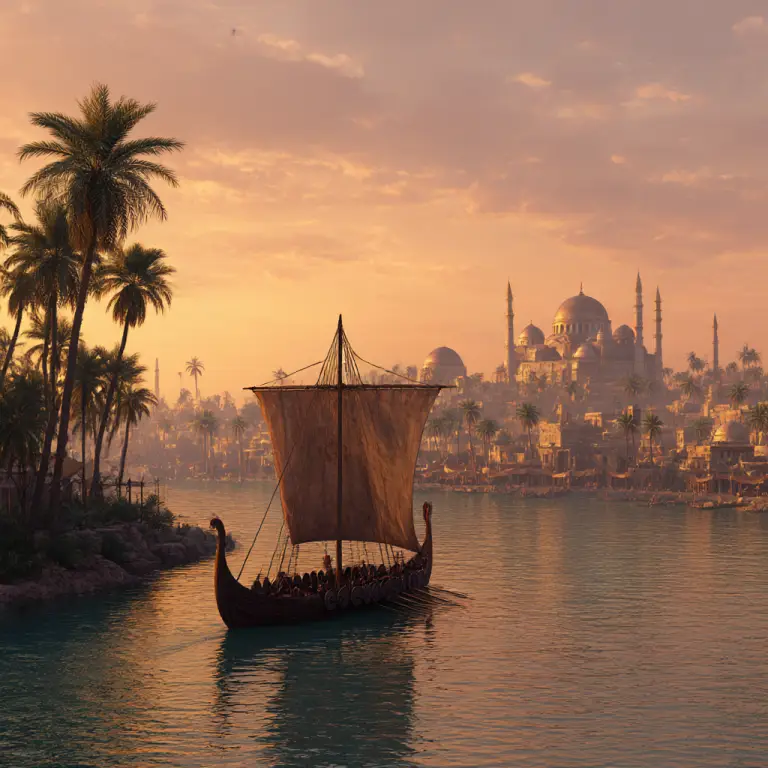Viking trade to the Middle East formed one of the most important aspects of their wider commercial networks, connecting Scandinavia with the riches of the Islamic world. From the late eighth century onwards, Scandinavian seafarers and merchants travelled along river routes that cut through Eastern Europe, following the Volga and Dnieper rivers into lands controlled by the Khazars, Bulgars and ultimately reaching the markets of the Abbasid Caliphate. These routes gave the Vikings access to goods, cultures and influences far removed from the North Atlantic world.
The Vikings were drawn to the Middle East by the wealth of silver coinage minted under the Abbasids. Dirhams became a vital medium of exchange across Scandinavia, with large hoards of Islamic silver unearthed in Sweden, Denmark and other parts of the Viking world. The flow of silver fuelled both local economies and the wider trade systems of the Norse. In return, Viking traders carried furs, amber, walrus ivory, honey, beeswax, iron tools and even slaves from the north and eastern Europe. Slavery, though brutal, formed a significant part of this exchange, with people captured during raids and wars sold into distant markets.
Contact with the Middle East was not purely economic. Archaeological finds, including silks, glassware, jewellery and intricately worked metal goods, reveal that Viking elites adopted luxury items to display wealth and prestige. The presence of Arabic coins, balance scales and weights in Scandinavian graves highlights the sophistication of their trading practices. The spread of exotic materials and styles also left cultural imprints, with some Norse art and craftwork showing influence from Islamic design.
The main centres of this trade were key riverine settlements such as Novgorod, Kiev and Bulgar, which served as staging posts between Scandinavia and the Islamic world. These trading hubs grew into powerful states partly due to their position as intermediaries. Viking leaders, known in Eastern Europe as the Rus, established political and military control over sections of these routes, ensuring the safety of merchants and the steady flow of wealth.
Viking trade with the Middle East demonstrates the far-reaching connections of early medieval Europe. It highlights how Scandinavian seafarers were not only raiders and warriors but also skilled merchants who linked distant worlds together. The silver, silks and spices of the Islamic caliphates found their way into northern Europe, while the resources of the north flowed southward into bustling markets such as Baghdad. This exchange shaped both the Viking Age economies and the emergence of early states in Eastern Europe, leaving a legacy that endured long after the decline of Viking seafaring power.



